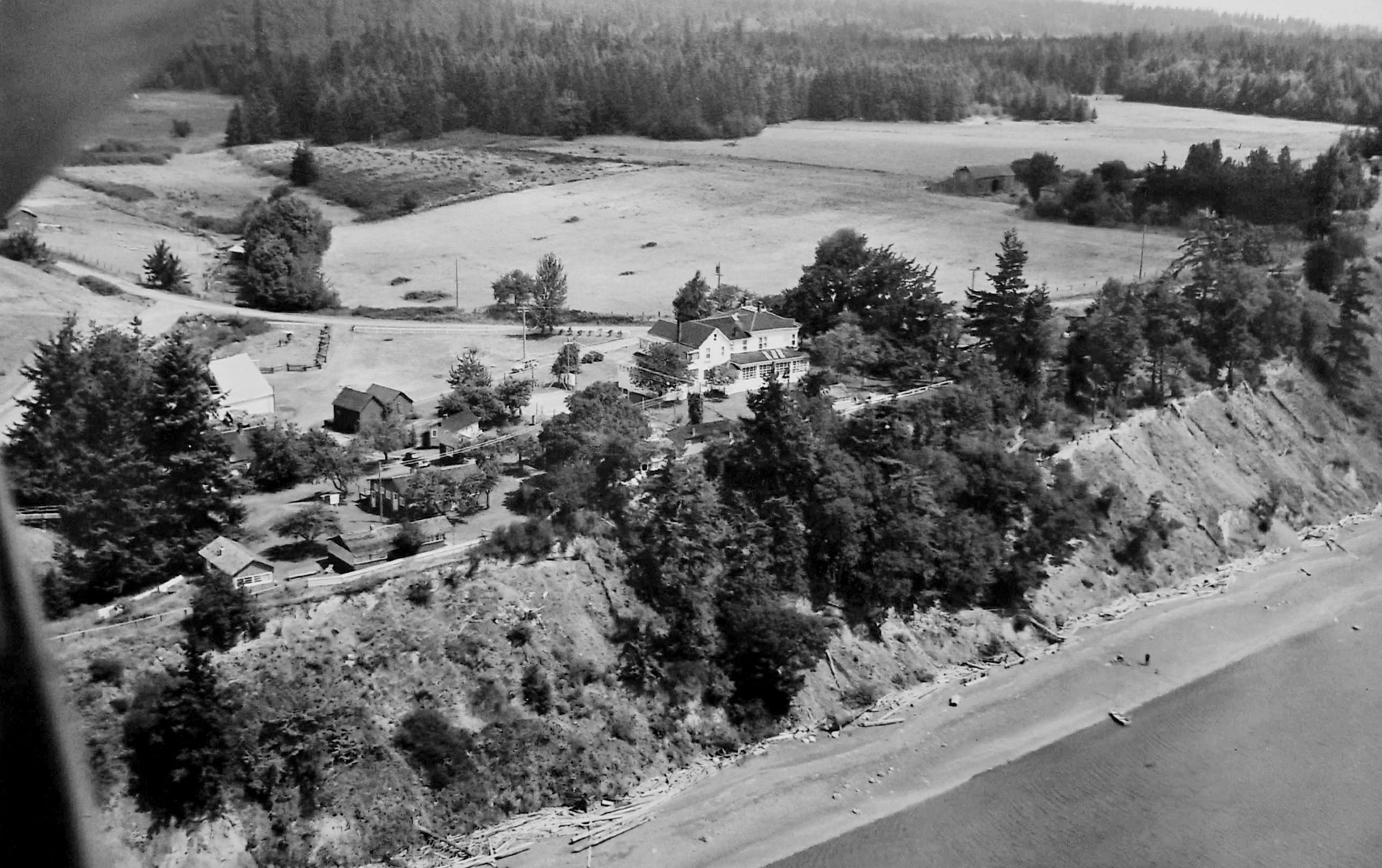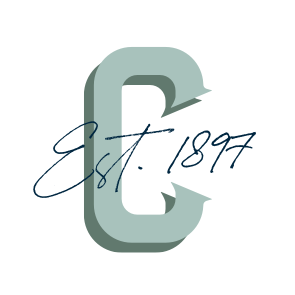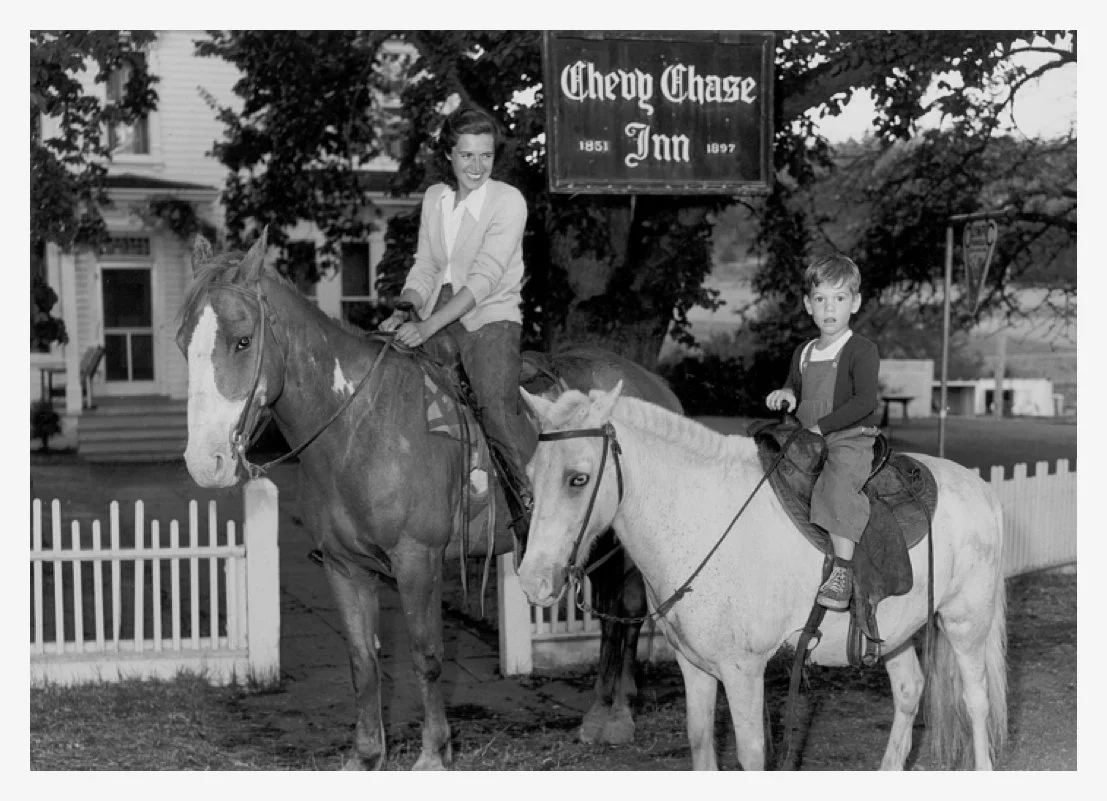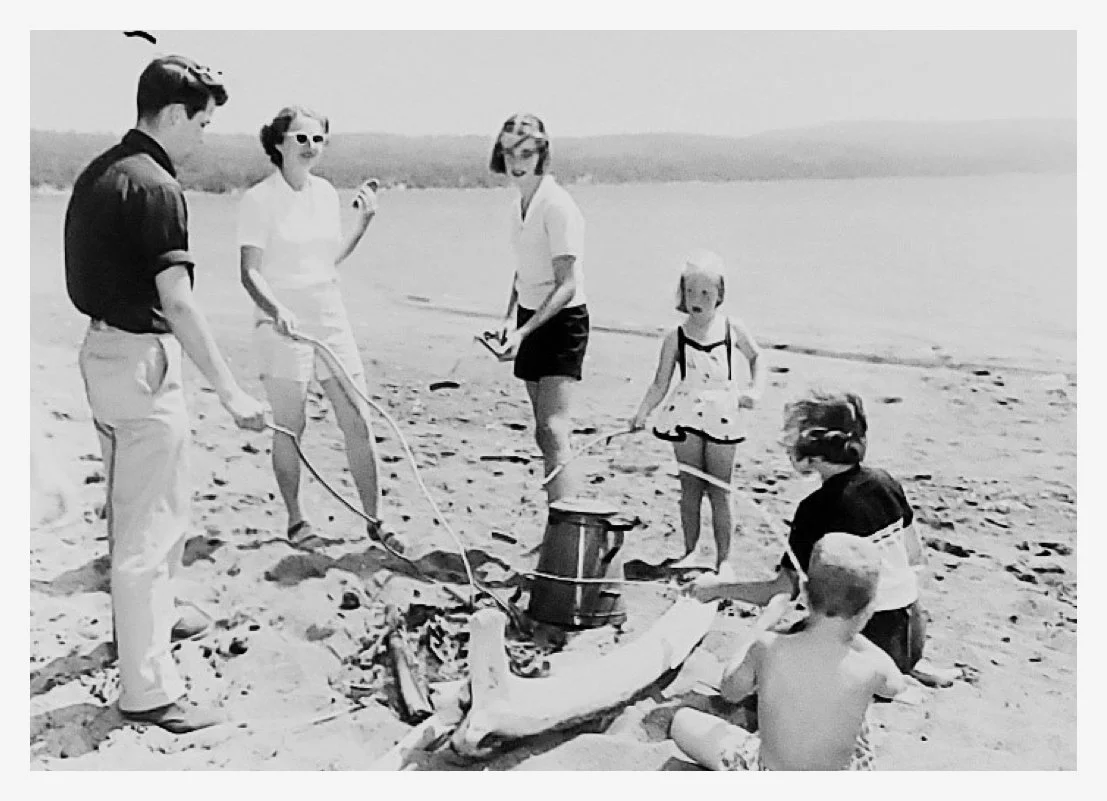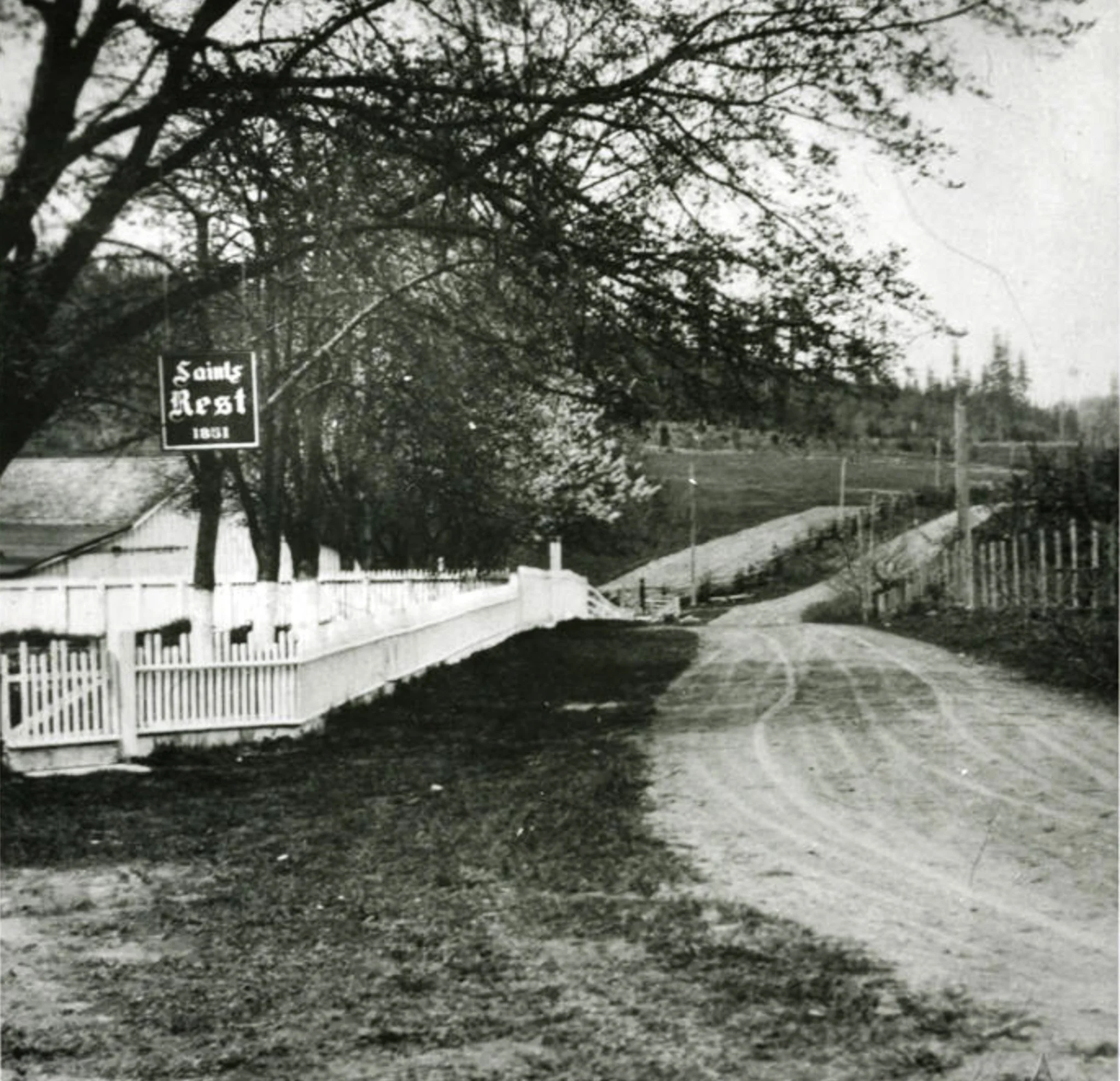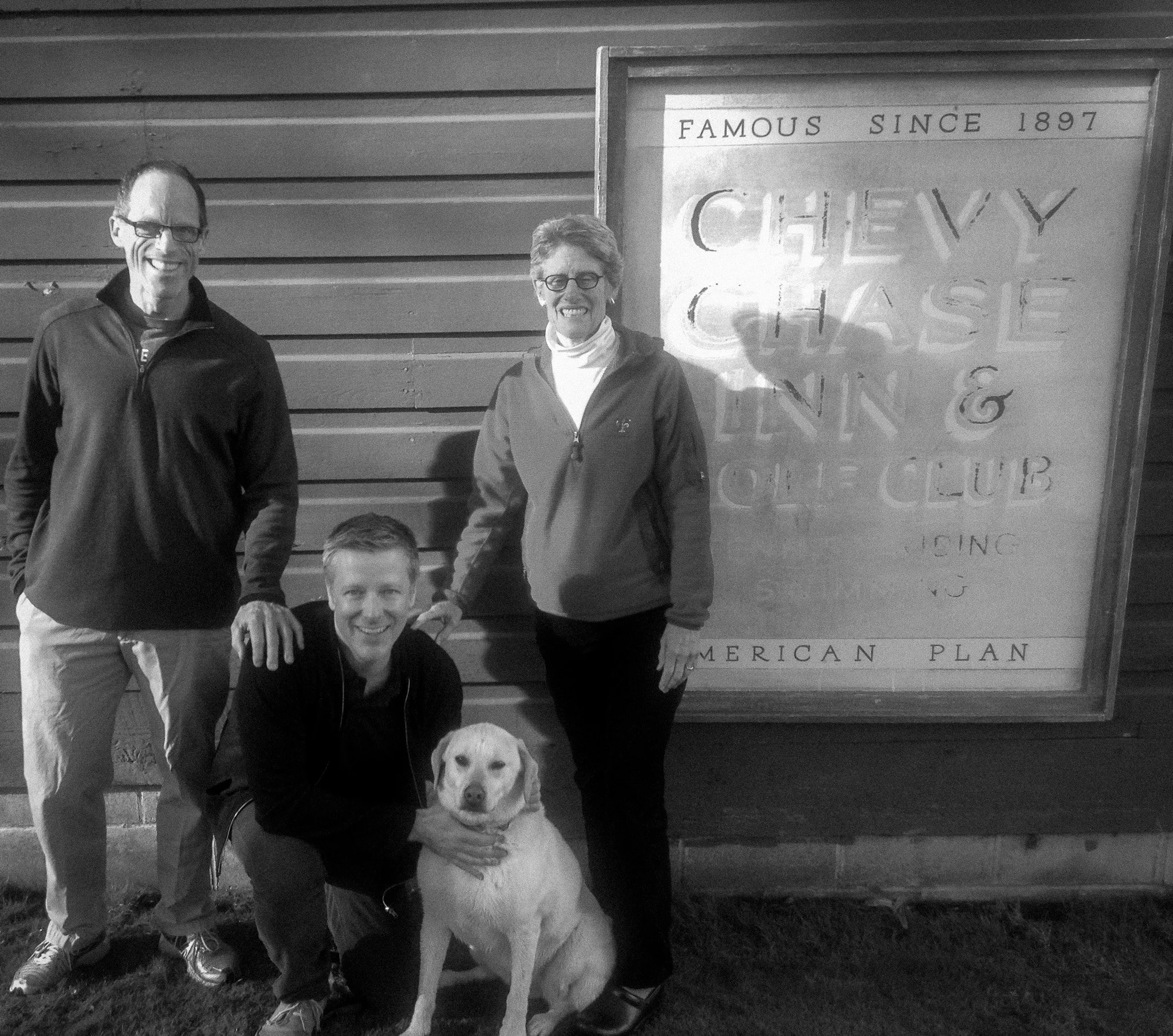For over 125 years, Chevy Chase Beach Cabins has been a charming getaway on Discovery Bay
Our History
Disappointed in his quest for California gold, John Tukey, a ‘state of Mainer,” headed north on a tramp lumber schooner. Life aboard the ship was unpleasant at best and when the vessel anchored in Discovery Bay in 1850. Tukey jumped ship and became the first non-native resident in the area, taking a claim of 500 acres on the eastern shore. During the boom years of the 1880s he sold half the land and with the proceeds built an Italianate style home on the bluff overlooking the bay. Boom turned to bust, and in 1897, he and his wife, Linnie Chase, opened the gates of the splendidly situated farm to paying guests. They named the vacation hideaway Saint’s Rest. The venture was a success; small cabins were built, and the main house (white victorian/Inn) was expanded to ten bedrooms.
While Mr. Tukey concentrated his energies tending 500 sheep, thirty cows, horses, and poultry, Mrs. Tukey served as a hostess in the house. The working farm provided the ideal retreat for well-to-do vacationers from Victoria, Seattle, Portland, San Francisco, and Spokane who longed for a bit of rural charm and relaxation. In many cases the families would stay for weeks or months.
In 1913, following the deaths of her mother and stepfather, Mary Chase modernized the facility and in 1923 changed the resorts name to Chevy Chase Inn (after the Cheviot Hills in England where the family originated). A nine-hole golf course was carved out of Tukey’s pasture and a cement tennis court was laid. The comfortable atmosphere brought guests back year after year, generation after generation.
After World War II, Mary Chase decided to retire and sold the property to Philip Bailey, a Seattle newspaper publisher, and frequent guest with a deep affection for the Inn and property. He added a swimming pool, resurfaced the tennis court, and planted hundreds of trees along the golf course. For seventeen years he maintained Chevy Chase as a favored retreat of Seattle’s “smart set.” In 1963 Bailey closed the Inn to refurbish it as a family summer retreat. Many of the cabins were moved off the property, although guests would still rent the remaining cabins for longer stays in summer months.
After their father’s death, Bailey’s eldest children, Bruce and Barbara, added a second nine holes to the golf course and rented out the Inn and cabins for family and business retreats. In 2003, Barbara Bailey her brother, Thatcher, and his partner Phil Kovacevich, moved into the Inn and undertook a much needed “fluff-up” of the facilities including significant updates to the Inn, cabins and property infrastructure and launched Chevy Chase Beach Cabins.
In December 2012, Jenn Dickey and Jeff Betinol purchased Chevy Chase Beach Cabins from Barbara, Phil, Thatcher and Bruce and are the current proprietors of this historic resort.
In 2022 we celebrated 125 years of hosting guests and 10 years for Jenn and Jeff as the owners and stewards.
